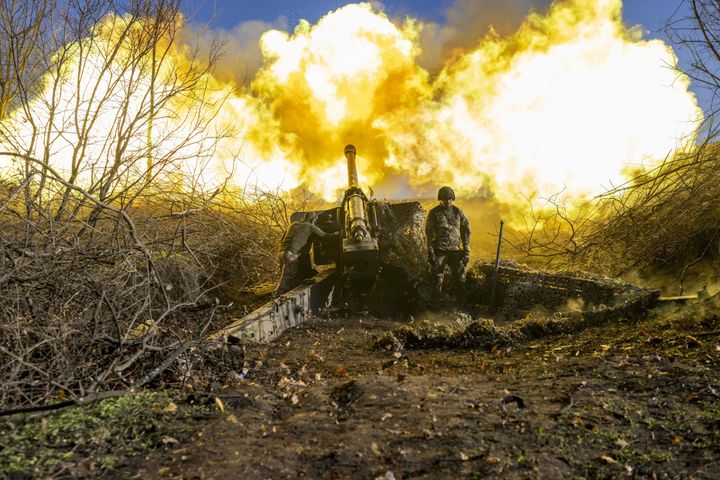
The US’ most senior general has just announced that close to 100,000 troops have been lost or injured on both the Ukrainian and Russian sides.
This approximation came from the chair of the US Joint Chiefs of Staff, General Mark Milley.
He also claimed that around 40,000 Ukrainian civilians have died since Russia invaded Ukraine in February, and that the war has created up to 30 million refugees.
The UN believes there have been 7.8 million people who have left Ukraine due to the war, although this number does not include those who have been displaced within their home country.
Milley said: “There has been a tremendous amount of suffering, human suffering.”
His stats were the highest figure to date to come from a Western official.
However, as with all conflicts, it is hard to calculate the total human casualties, and there has been a range of completely different numbers looking into total deaths and injuries in recent weeks.
What do we know about Ukrainian stats?
Kyiv has mostly avoided any confirmation or denial of casualty numbers when it comes to its own forces.
The country’s armed forces’ commander-in-chief Valeriy Zalyzhniy told Ukrainian media in August that 9,000 Ukrainian troops had died.
Reuters noted at the time that the figure “appeared to be the first provided by Ukraine’s military top brass” since the war begun.
The commander-in-chief has not provided any further details, including whether this figure included all service personnel.
Until Milley’s comments this week, US intelligence had estimated between 5,500 to 11,000 Ukrainian troops had been killed with more than 18,000 wounded.
The OHCHR also recorded 16,462 civilian casualties in Ukraine between February 24 and November 6 – 6,490 were killed, and 9,972 were injured.
Are numbers around Russian casualties consistent?
No – in fact, they vary pretty widely.
Ukraine’s latest stats suggest around 78,690 Russian personnel have been “eliminated” between February 24 and November 10, with an additional 740 deaths which are yet to be verified.
This isn’t too far from the US’s estimate of 100,000 Russian casualties.
For contrast, the most recent update from Russia was in September.
It claimed that only 5,937 troops had been killed since the beginning of the war.
The Kremlin’s defence minister Sergei Shoigu dismissed all claims that the death toll was higher.
Why is it so hard to be certain of these figures?
FullFact, a fact-finding charity, said finding accurate data around military deaths is “notoriously difficult”.
This is because it relies on a “combination of intercepted communications on both sides, satellite imagery and ‘contact reports’ where troops in battle estimate how much damage they have inflicted on the other side”.
The charity pointed out that all sources had to include an “element of guesswork” – and that both Russia and Ukraine have a “vested interest” in making sure the publicised stats “suit their needs”.
What can we expect from the future?
The war is far from over, despite Ukraine’s recent successes and the inevitable slowing effect the winter will have on fighting.
However, Milley did suggest this week that there were early signs Kyiv was considering future negotiation with Moscow – although president Volodymyr Zelenskyy has suggested he will only do so if Vladimir Putin is ousted as president.
Milley also warned that peace was only achievable through a “mutual recognition” that a victory on the battlefield could not necessarily resolve the conflict.
Many Ukrainians were delighted when Russia announced it was in the process of pulling out of the Ukrainian city of Kherson, on Wednesday, blaming supply issues.
This is expected to take several weeks as there were 20-30,000 troops stationed in the area.
But, Zelenskyy urged Ukrainians to be “restrained” over the news, warning that the “enemy does not bring us gifts”.
He suggested that the retreat could be a ruse to lure Ukrainian forces back into battle in the only regional city Russia has successfully taken since its invasion began.
Putin has also kept up his aggressive rhetoric recently, which has prompted fears that he could turn to use nuclear weapons, risking an even bloodier war.
